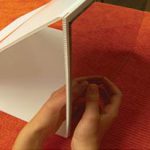Mirror Therapy for Arthritis Pain
 Arthritic pain causes disability for many people. Due to the many different types of arthritis and complexity of pain management it is often reported that pain is poorly controlled. Rheumatoid arthritis treatment for pain is reported to be inadequate by 60% of patients in Europe and 65% in the US (Taylor et al 2010). This lack of pain control can lead to loss of quality of life and employment, as well as cognitive, social, and economic costs (Ballantyne & Sullivan 2015).There is increasing evidence that chronic pain problems are characterised by alterations in brain structure and function (Wand et al 2011). This is shown
Arthritic pain causes disability for many people. Due to the many different types of arthritis and complexity of pain management it is often reported that pain is poorly controlled. Rheumatoid arthritis treatment for pain is reported to be inadequate by 60% of patients in Europe and 65% in the US (Taylor et al 2010). This lack of pain control can lead to loss of quality of life and employment, as well as cognitive, social, and economic costs (Ballantyne & Sullivan 2015).There is increasing evidence that chronic pain problems are characterised by alterations in brain structure and function (Wand et al 2011). This is shown
in arthritis by the fact that intensity of arthritic pain does not directly co-relate to damage seen on x-ray. Therefore, there must be some other processes occurring that influence the pain. Pain is thought to be caused by conflict between sensory-motor processing networks in the brain (Harris 1999, McCabe et al 2005). Pain often leads to disuse of that limb. Because of this disuse, the sensori-motor portion of the brain corresponding to the painful limb, becomes less active. As pain increases, so does the disuse and disorganization of the brain (Schwenkreis et al 2009).
For example, if you have arthritis in your hand and make a fist, what you expect to feel (when your hand is healthy) doesn’t match the actual sensation, which creates conflict and is perceived as more pain. Mirror therapy can alleviate pain by correcting the distorted body perception as well as body representation (Moseley et al 2008). Using mirror therapy for arthritis could therefore reduce pain.
Arthritis treatment of the hand using mirror therapy could consist of watching the reflection of your unaffected hand in a mirror. You could start with small movements with the unaffected hand. Seeing the reflection of your unaffected hand in the mirror moving freely, and perceiving it as your affected hand, “tricks” the brain into thinking the hand is okay. The same can be done for arthritis treatment of the knee but by watching the unaffected leg bend and straighten in the mirror
.There is one evidence that mirror therapy can help reduce chronic pain which is specific to arthritis. One abstract of a study was reported at the annual meeting of the Society for Neuroscience 2011. Eight patients with osteoarthritis and rheumatoid arthritis were given one minute of mirror therapy after ranking the pain in their joints on a 10-point scale. On average, the patients ranked their pain one and a half points lower during the therapy, with some patients down-rating their pain by three points (Case et al 2011).
Another study concluded that mirror therapy represents an intervention with few side effects and might have positive effects on the experience of chronic pain in patients with inflammatory rheumatic disorders (Bekrater-Bodmann 2015). As it is a low-cost treatment that has the possibility of dramatically reducing pain, it is worth having a go!